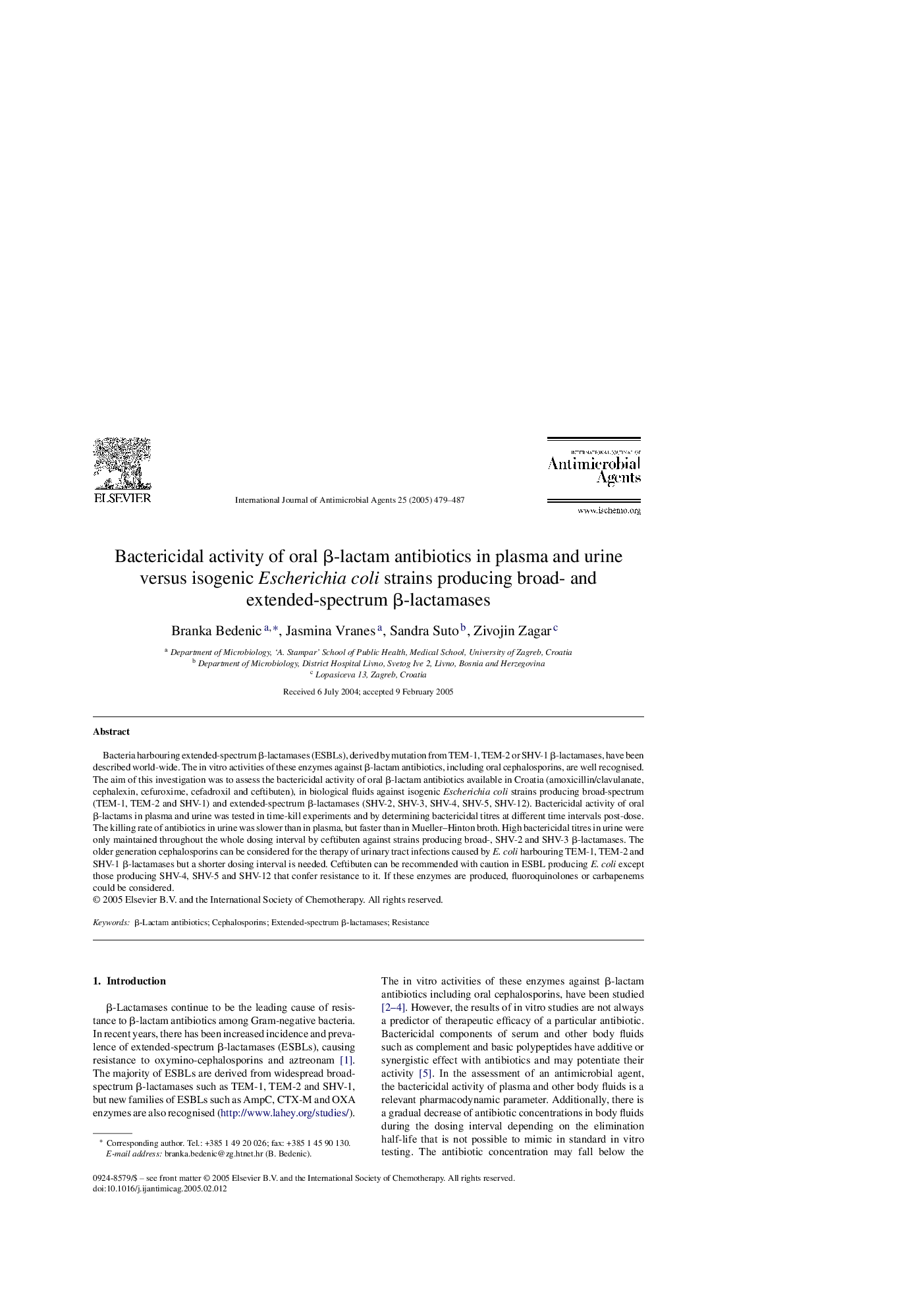| Article ID | Journal | Published Year | Pages | File Type |
|---|---|---|---|---|
| 10027918 | International Journal of Antimicrobial Agents | 2005 | 9 Pages |
Abstract
Bacteria harbouring extended-spectrum β-lactamases (ESBLs), derived by mutation from TEM-1, TEM-2 or SHV-1 β-lactamases, have been described world-wide. The in vitro activities of these enzymes against β-lactam antibiotics, including oral cephalosporins, are well recognised. The aim of this investigation was to assess the bactericidal activity of oral β-lactam antibiotics available in Croatia (amoxicillin/clavulanate, cephalexin, cefuroxime, cefadroxil and ceftibuten), in biological fluids against isogenic Escherichia coli strains producing broad-spectrum (TEM-1, TEM-2 and SHV-1) and extended-spectrum β-lactamases (SHV-2, SHV-3, SHV-4, SHV-5, SHV-12). Bactericidal activity of oral β-lactams in plasma and urine was tested in time-kill experiments and by determining bactericidal titres at different time intervals post-dose. The killing rate of antibiotics in urine was slower than in plasma, but faster than in Mueller-Hinton broth. High bactericidal titres in urine were only maintained throughout the whole dosing interval by ceftibuten against strains producing broad-, SHV-2 and SHV-3 β-lactamases. The older generation cephalosporins can be considered for the therapy of urinary tract infections caused by E. coli harbouring TEM-1, TEM-2 and SHV-1 β-lactamases but a shorter dosing interval is needed. Ceftibuten can be recommended with caution in ESBL producing E. coli except those producing SHV-4, SHV-5 and SHV-12 that confer resistance to it. If these enzymes are produced, fluoroquinolones or carbapenems could be considered.
Related Topics
Life Sciences
Immunology and Microbiology
Applied Microbiology and Biotechnology
Authors
Branka Bedenic, Jasmina Vranes, Sandra Suto, Zivojin Zagar,
